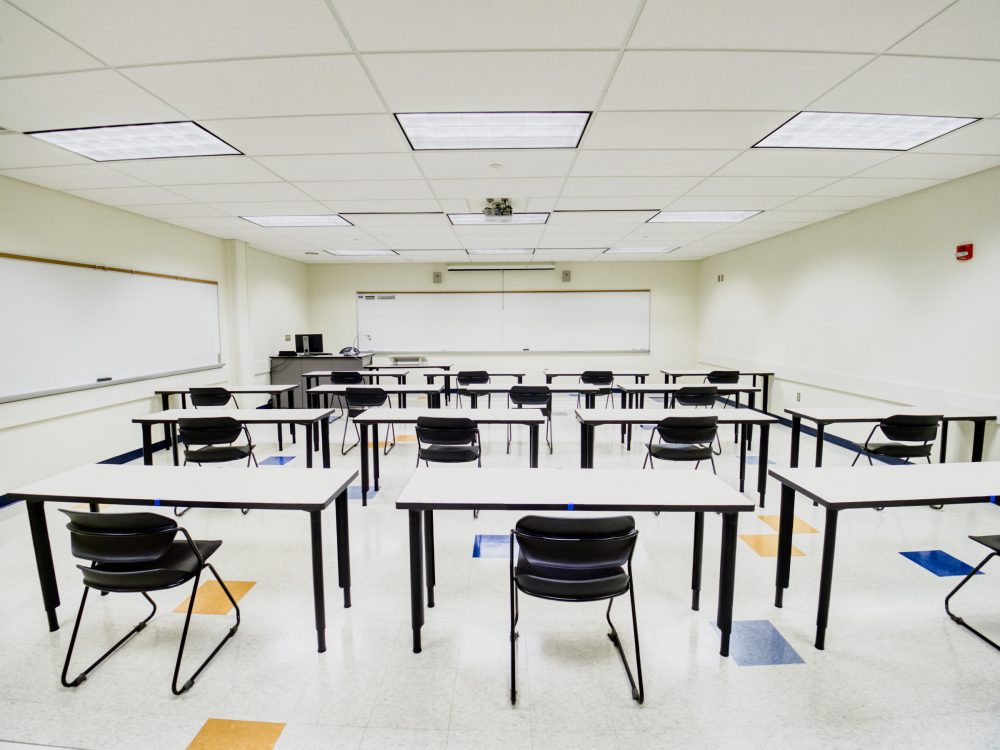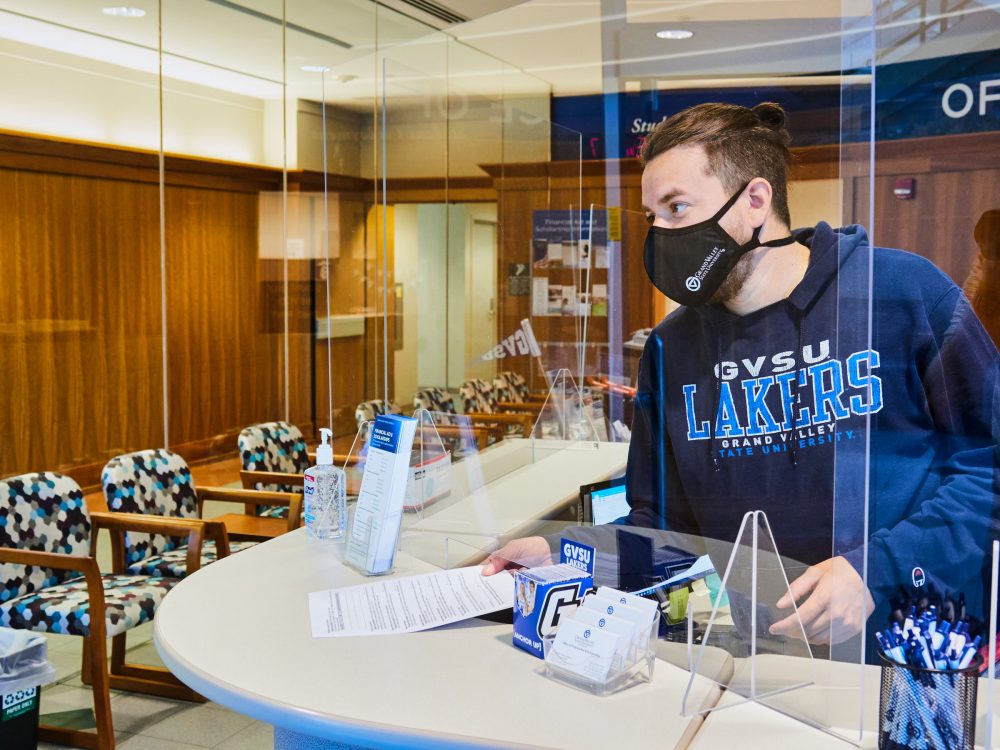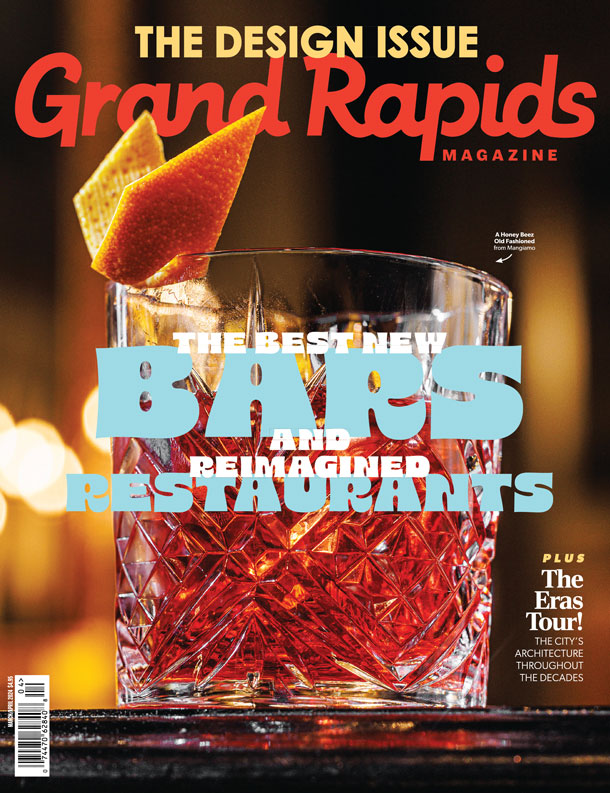The first time Jacob Starner heard about novel coronavirus he was studying on exchange in South Korea. It was right around Thanksgiving when his phone lit up with a news article from his mom, texting from back in Grand Rapids.
“Mysterious Virus in Wuhan, China,” the headline read. But Wuhan, even in neighboring China, was still far away. And the idea that the virus would burst through borders and grind the world to a halt was impossible to fathom. So, he forgot about it.
“I was like, OK — that means nothing to me,” Starner recalled. “And I moved on with my day.”
And for the next few months, life in South Korea kept humming along. Like a number of American students every year, he soaked up an international high school experience via Rotary Club, living with South Korean families and taking courses alongside South Korean students. He can tell stories about the local culture (happy hour is very, very different) and the school (where the math was hard, but during English class, the South African expat let him take a study hall).
But life began to change. During vacation in January and February, he had trips cancelled. A local church with controversial beliefs — that Jesus is not God incarnate, but that the pastor was sent by him — became the country’s viral epicenter. Things began shutting down.
“That’s when things got serious in South Korea, and the government started imposing lockdowns specifically on that province, and they canceled school,” Starner said. But he recalls being more worried about exchange students in other parts of the world than for himself — in Italy especially, with one of the worst early outbreaks. He never imagined he’d be going home.

But his family was a world away and watching things get worse — and by mid-February things began taking their expected course. Worries about flight cancellations started to rise. When Starner got a plane ticket, his flight was just 24 hours away, leaving him almost no time for goodbyes. He has a picture of himself with his host parents at the airport, holding a South Korean flag together.
And then Starner was back in East Grand Rapids, quarantined like everyone else. He had planned on studying in Israel via American Jewish University this fall before heading to the University of Michigan. But that’s different now. He still likes the idea of the University of Michigan — but as of May, he was eyeing local, online classes at Grand Rapids Community College. He’s looking forward to studying economics or political science — probably a language, too — but it’s all going to be so much different than he’d expected. Now he’s waiting for the fall, nostalgic for something that won’t ever happen.
“The thing that bothers me the most about coronavirus is that it’s kind of put everything on pause. But the problem is, everyone is still getting older, and the time is slipping by,” Starner said. “Both my grandpa and my dad told me all about their fun adventures in their youth, and I just don’t think I can tell my kids about my adventures in my house.”
Planning for fall semester
The changes leave Starner, like countless other American students, shifting plans for the fall. It’s an enormous disruption on top of the already huge change that comes as high schoolers start their independent, adult lives. And it is at the crux of the COVID-19 pandemic — with students shoulder-to-shoulder on the quad, in classrooms and in dorm halls.
Sarah Gammans is the director of counseling for Northview High School in Plainfield Township. When she spoke to Grand Rapids Magazine in May — like all the subjects for this article — she described a flurry of day-to-day activity, tending to seniors’ career plans and emotions that have been scrambled by the pandemic. Gammans pointed out that she still didn’t even know how many of the school’s nearly 300 seniors were going to college or into the workforce, because the survey for it had to be served virtually, and firm numbers weren’t back yet.
There is a galaxy of challenges for students to work through, each unique to their needs. In the case of some elite schools’ admission decisions that didn’t come until after quarantine, hopefuls won’t have a final campus visit before choosing their school.
There’s also the question of coping emotionally. Some kids had found structure in art and music; some were struggling without a firm direction. Others threw themselves into athletics, training at home for a world where sports would happen again (and keeping themselves busy).
“You’re going to see a lot of these kids and adults are going to come out very buff after quarantine,” Gammans said with a laugh.

Maddy Revere is yet another graduating senior looking forward to classes this fall — for her, in Kalamazoo at Western Michigan University. She’s considering a career in law or filmmaking and is weighing classes in psychology and communications. Nothing has been the same since the week the pandemic happened. She couldn’t head back to see her high school’s musical again. But she’s painting in her spare time, and she’s had a chance to see some friends, though from a distance. A part-time job keeps her busy.
“It’s starting to feel normal, so that’s good at least. But I don’t know — it kind of feels like summer, but it’s not fun. I’m not going to school. I’m just not doing much at all,” she said. And, she said, she’s wondered what college will actually look like when she gets there. “I’ve read a lot of articles about how we’ll have to do social distancing … (and) I guess I don’t know what would happen with the dorms.”
And just like the students, high schools and universities have spent much of the summer watching the virus closely, trying to understand how best to balance student safety and campus life. How will kids go to class? How will they live in dorms? How will they go to sporting events — if at all?
At Grand Valley State University, President Philomena Mantella described plans to bring students back to campus. But, speaking in May, she couldn’t say precisely what it would look like, a byproduct of ongoing preparations and the biggest unknown factor of all: the virus.

“I would say we believe there is a very high probability that we will be able to offer a face-to-face experience in the fall,” Mantella said, describing digital course offerings, changes in student “density” and attention paid to sanitation in dorms. “(But) we are certainly not standing on that and that’s the end of the sentence.”
And although every college is different, many of them had the same wait-and-hope approach through the summer. The University of Michigan was planning a return to on-campus instruction, as possible. Grand Rapids Community College was much the same, with officials hoping in May to host some classes on campus and some online.
“Everyone’s desired goal is to have the students return in the fall,” said Norm Beauchamp, Michigan State University’s executive vice president for health sciences. “It’s hard to imagine a full return to life exactly as it is in the spring. But we’re going to continue to monitor that.”
And there is, of course, more that students might be missing out on than just classes. Mantella fondly recalls her own time in college, where she learned plenty outside the library.
“My parents didn’t go to college. (But) all my brothers and sisters and I went to college,” she said. “The world was different. There was a diversity of students from all over the world. I went to school with three majors in mind and learned there were 200, and every combination that could occur. And you learned to communicate, to self-regulate … it’s financial literacy, it’s independence, it’s your own personal development, it’s your evolution of thought and perspective on the world.”
This kind of learning outside the classroom is just as much a concern at the high school level, where sports and extracurriculars, a big part of the education outside the classroom, have all but stopped. Greg Deja, the principal of Catholic Central High School, pointed out that classes were interrupted by COVID-19 eight months through the school year. Students were marooned at home, but they at least knew each other.
“I think the big challenge when we talk about relationships — most schools had the benefit of leaning on relationships that were eight months firm to get us through the last 10 weeks,” he said.
But when students arrive in September, that won’t be the case anymore.
Craig Weigel, principal at East Grand Rapids High School, pointed out that students miss out on the “person-to-person” part of education in quarantine. Isolation doesn’t just mean learning from home — it also means missing out on relationships. But, he said, the school is making it work.
Medical professionals eye a second wave

In the meantime, students, professors and college administrators have waited to see what happens. By the time you read this, COVID-19 might have been brought under relative control; it might also have exploded into something far more difficult.
“On one end of the spectrum, there’s a possibility we get a good handle on this over the summer, develop new tools for doing surveillance, testing and tracing … (and) we can engage education as usual,” said Adam London, health officer with the Kent County Health Department. “I think on the other extreme, we see a resurgence in cases over the summer as the discipline to public health protection fades.”
And that is one of the most important factors: whether or not the public continues to socially distance or heeds the tempting call of life as normal — something London warned won’t be back until at least 2021, which is the earliest he expects a vaccine.
“It really is the biggest variable here, and how smart are they going to be in their interactions?” London said.
But here is the most important aspect: no matter what the virus is doing in the late summer, London said, there’s still a wide-open range of possibilities headed into the fall and winter. And with winter will come another flu season on top of COVID-19. And people will once again be in closed-air environments. The wrong combination could be “catastrophic,” London said.
In pockets of Michigan where the virus struck the hardest — Wayne, Oakland and Macomb counties — college almost certainly will look different. At Oakland University, President Ora Hirsch Pescovitz announced that lab classes would have slashed student caps, with some classes set in over-large rooms and ballrooms to keep students distanced. Masks were expected to be a requirement.
As of this writing, Grand Rapids had not fared as badly as the dense, urban east side of the state, something London said was aided both by more time to prepare for the virus and the nature of the cities there. More density means easier transmission; more people living in poverty means more low-paying jobs, like grocers and delivery drivers and the like, that cannot be done from a living room (which London points out often means people of color fare worse in this situation than wealthier, white neighbors).
And the viral load in the United States is, per capita, one of the highest in the world, with far and away the highest national total number of cases. And though it’s hard to say what happens next, it likely won’t go as well as it has in South Korea, where government response has kept cases extremely low.
“This has been a topic of contention between my mom and I,” Starner joked. “The handling of coronavirus in South Korea — I would probably be safer there, but the hindsight is 20/20. The choice we made then … you can’t regret that.
“But anytime she’s like, ‘You can’t do this,’ I’m like,” — and he chuckles — ‘Well, maybe you shouldn’t have brought me home.’”













Facebook Comments